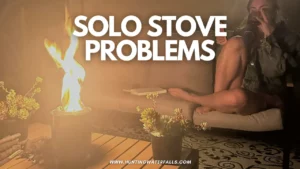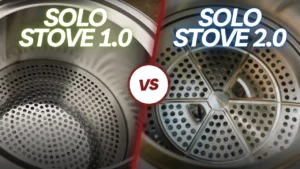I’ve been a huge fan of Solo Stove fire pits for years and it’s mainly because they essentially burn smokeless and they’re fantastic quality. This means my clothes and hair don’t smell like smoke after an evening around the fire pit and my kids don’t complain about smoke in their eyes.
Solo Stove fire pits have a unique and trademark design and you might wonder how they work.
Solo Stoves work by having a dual wall design which draws air in from the bottom exterior, then passes it up through the outer wall of the fire pit where it gets heated and provides super heated oxygen to the fire causing a secondary burn and reducing smoke.
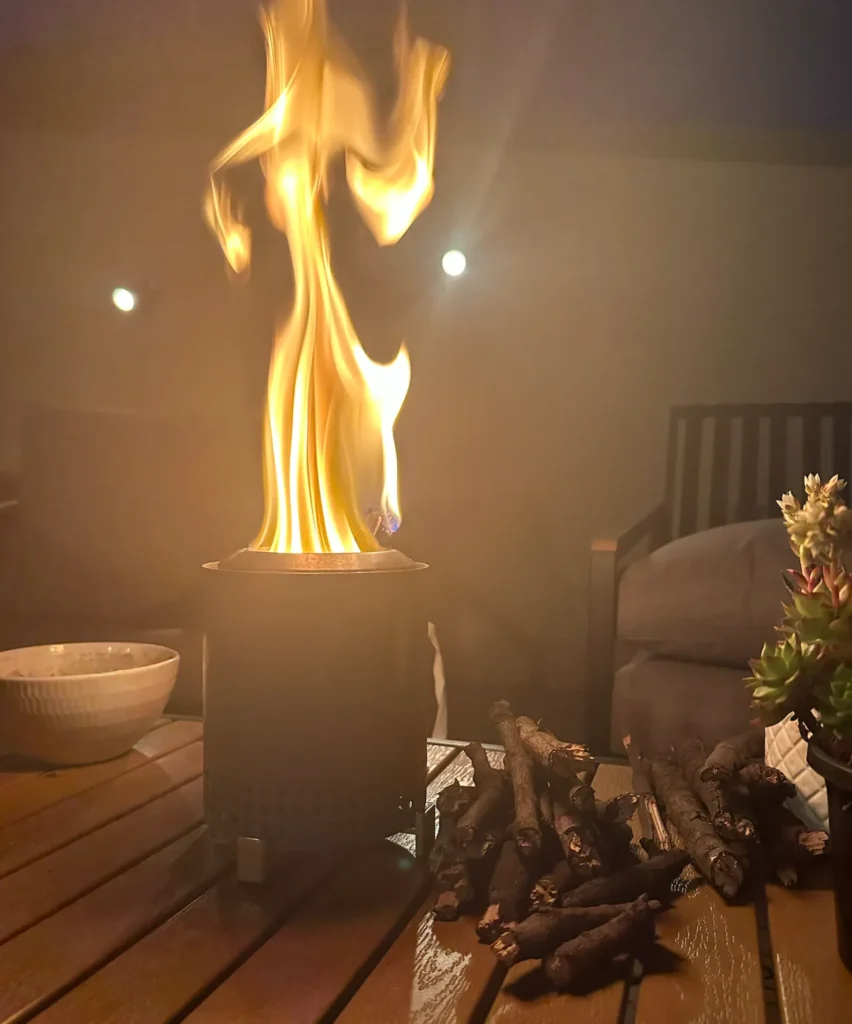
Once you understand how Solo Stoves burn smokeless and how they use science to achieve this, you’ll be tempted to invest in one if you don’t already have one.
How Do Solo Stove Fire Pits Burn Smokeless?
Solo Stoves burn smokeless due to their patented design which is represented in the image below:
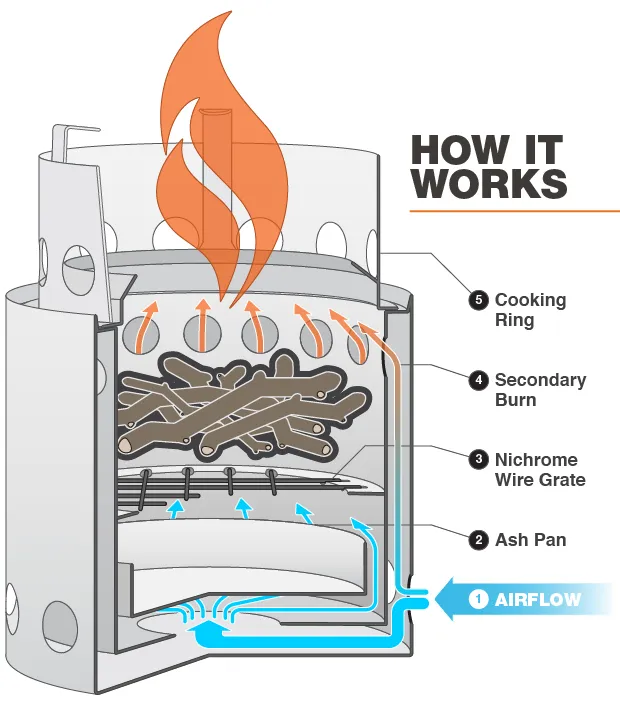
Solo Stove fire pits large and small all have the same unique design:
- Dual walls
- A set of holes in the bottom outer walls.
- A set of holes at the bottom underneath the fire
- A set of holes in the upper inner walls.
- For solo stove cookers – a set of holes just above the cooking ring
This is what Solo Stoves refers to as its 360° Airflow Technology.
Here’s how it works:
1. Oxygen Is Pulled in Through the Bottom Exterior
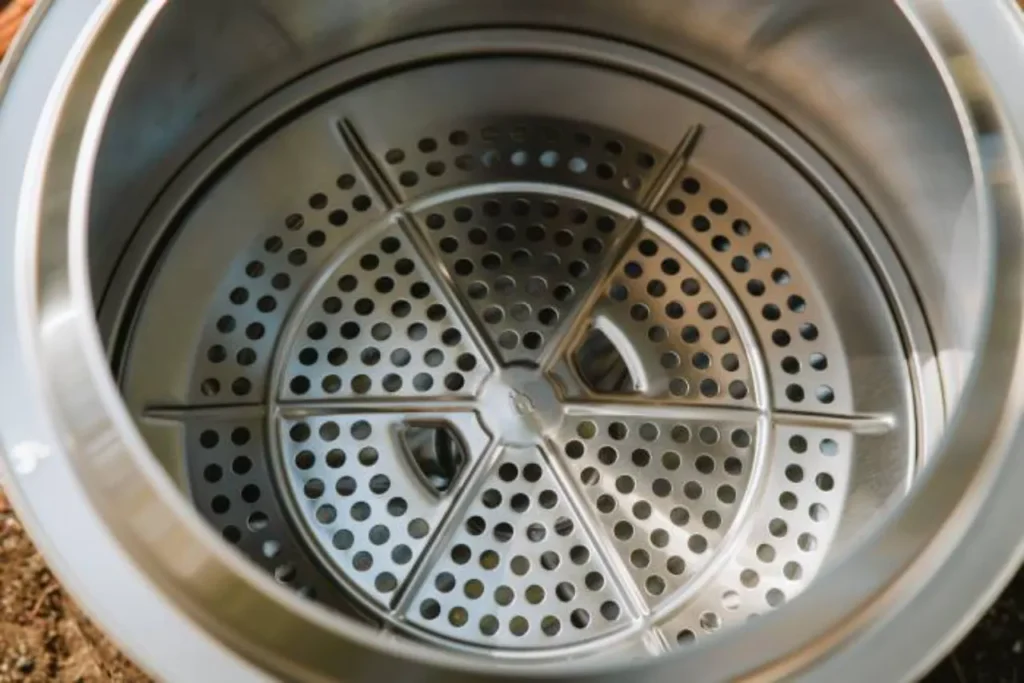
As you light the wood in your Solo Stove, combustion takes place which forms a vacuum that pulls in oxygen-rich air through the outer bottom holes.
Much of this air passes through to the bottom of the fire giving the core of your fire much needed oxygen so it can burn more efficiently.
2. The Air Passes Through the Outer Wall and Is Heated
Solo Stove fire pits feature a dual wall design.
As the fire burns air is drawn into the cavity between the inner and outer walls of the fire pit.
3. The Super Heated Oxygen Creates a Secondary Burn

The super heated oxygen then shoots out from the top holes of your Solo Stove and this gives the fire an added boost as it hits the flames and causes a secondary burn of the remaining combustible material.
This causes a more complete burn than a traditional fire and is what's responsible for eliminating the smoke.
It's really cool to water this secondary burn in action and it can give you a unique shaped flame that goes directly upwards and looks almost like the blade of a knife as it burns.
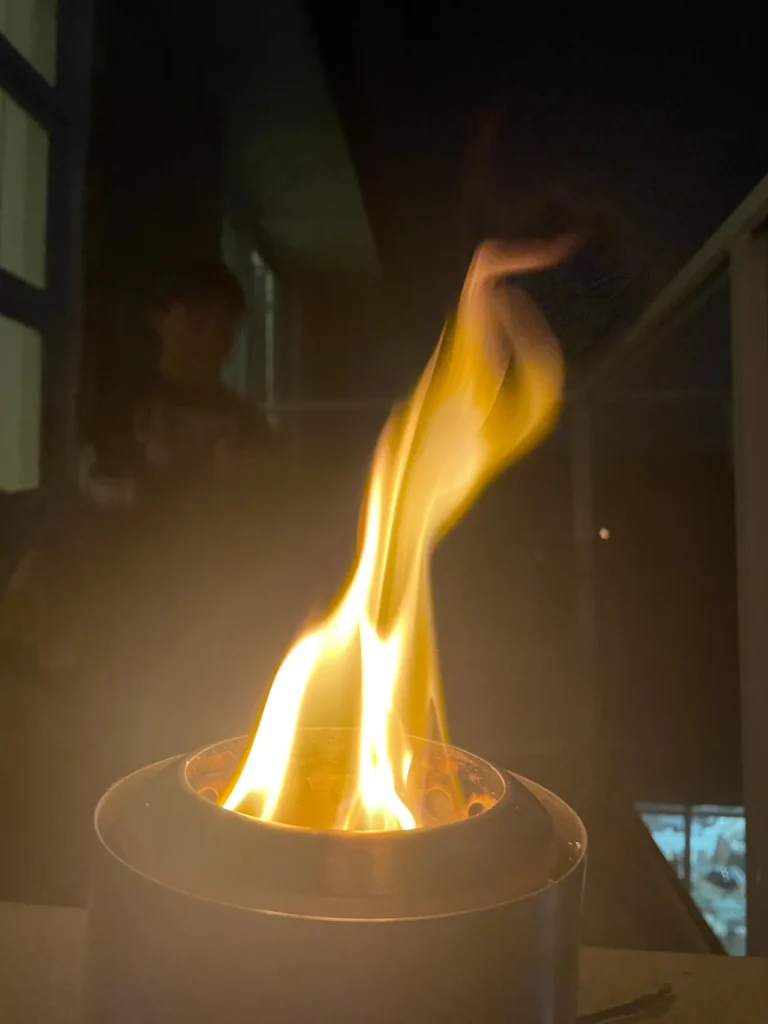
Solo Stove fire pits also produce less ash because of this more complete burn. This makes cleaning up more convenient (although the 2.0 Solo Stove fire pit range comes with a removable ash pan, one of the differences between Solo Stove 1 and 2.
That said, your Solo Stove might still produce a little smoke if:
- You use wet wood (kiln dried wood is better)
- You start off with too much firewood (I like to start with some dry kindling and some firestarters)
- The quality of your firewood isn’t great (oak and juniper are great choices)
- You burn vegetation
- You haven’t emptied out the ash from previous fires (little or no ash promotes better airflow in the fire pit)
- The wood sticks up above the secondary holes. This inhibits the secondary burn and can result in a lot of smoke.
Just remember that Solo Stoves emit a little smoke when you first light them but once secondary burn occurs they’re pretty much smokeless and produce around 80% less smoke than a regular fire.
This is because the walls of the Solo Stove need to get hot for the secondary burn mechanism to work and in the beginning the walls aren't hot enough to super heat the air.
Since Solo Stoves rely on the holes in their walls to achieve secondary burn and operate smokelessly, you should avoid blocking them.
This means avoiding covering the holes with wood and not placing wood over the rim of the fire pit.
Some folks also like to place their firewood pieces close to the inner walls so that the flames heat the fire pit walls more and produce a better secondary burn for guaranteed smokelessness.
Below is a video from Solo Stove giving advice on how to get a smoke-free fire:
The YouTube video below also gives a visual explanation of how Solo Stoves work:
In the market for a Solo Stove fire pit but don’t know which one to get? Check out my guides comparing the Ranger 2.0 and Bonfire 2.0 and also the Yukon 2.0 and Bonfire 2.0.


